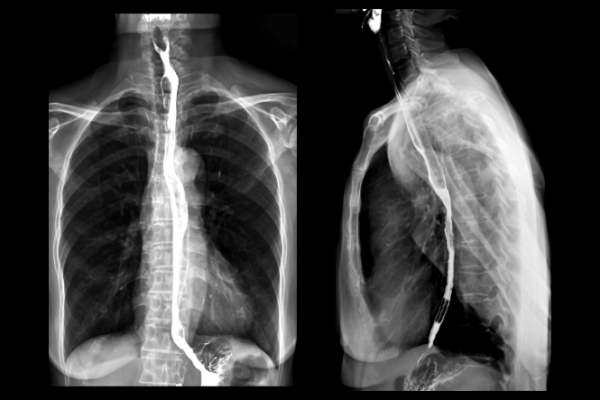A barium swallow or a barium meal (also called an oesophagogram) is an x-ray that is taken during or after you have swallowed a substance called barium. Barium is a chalky liquid that shows up well on x-rays. A barium swallow gives a clear picture of the back of your throat and the tube that leads to your stomach (your oesophagus) as you are swallowing. A barium meal shows your stomach and the upper part of your bowel after you have swallowed the barium. Often a barium meal x-ray is taken straight after the barium swallow. As barium passes down your throat and through your stomach it outlines their shape and also their movement.

Image credit: Canva






